Solar eclipse of March 30, 2033
| Solar eclipse of March 30, 2033 | |
|---|---|
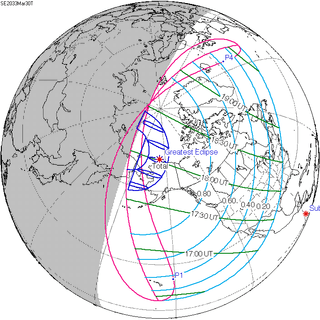 Map | |
| Type of eclipse | |
| Nature | Total |
| Gamma | 0.9778 |
| Magnitude | 1.0462 |
| Maximum eclipse | |
| Duration | 157 sec (2 m 37 s) |
| Coordinates | 71°18′N 155°48′W / 71.3°N 155.8°W |
| Max. width of band | 781 km (485 mi) |
| Times (UTC) | |
| Greatest eclipse | 18:02:36 |
| References | |
| Saros | 120 (62 of 71) |
| Catalog # (SE5000) | 9581 |
A total solar eclipse will occur on March 30, 2033. Totality will be visible in Nome, Alaska, Barrow, Alaska and Chukchi Peninsula in the mid-morning hours.
Images

Animated path
Related eclipses
Solar eclipses of 2033-2036
Each member in a semester series of solar eclipses repeats approximately every 177 days and 4 hours (a semester) at alternating nodes of the Moon's orbit.
| Ascending node | Descending node | |||||
|---|---|---|---|---|---|---|
| 120 | March 30, 2033 Total |
125 | September 23, 2033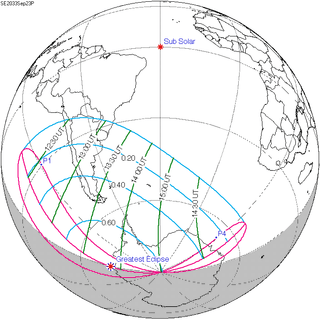 Partial | |||
| 130 | March 20, 2034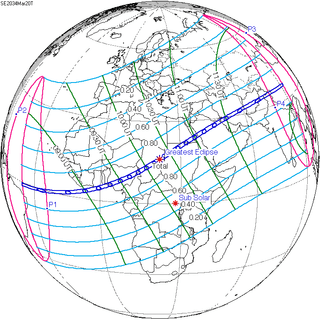 Total |
136 | September 12, 2034 Annular | |||
| 140 | March 9, 2035 Annular |
145 | September 2, 2035 Total | |||
| 150 | February 27, 2036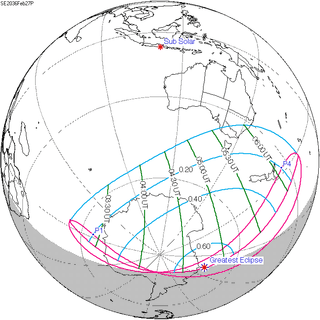 Partial |
155 | August 21, 2036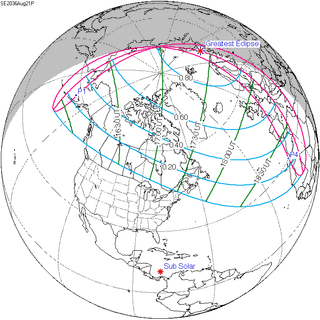 Partial | |||
| A partial solar eclipse on July 23, 2036 occurs in the next lunar year eclipse set. | ||||||
Saros 120
It is a part of Saros cycle 120, repeating every 18 years, 11 days, containing 71 events. The series started with partial solar eclipse on May 27, 933 AD, and reached an annular eclipse on August 11, 1059. It was a hybrid event for 3 dates: May 8, 1510, through May 29, 1546, and total eclipses from June 8, 1564, through March 30, 2033. The series ends at member 71 as a partial eclipse on July 7, 2195. The longest duration of totality was 2 minutes, 50 seconds on March 9, 1997.[1]
Series members 55–65 occur between 1901 and 2100:
| 55 | 56 | 57 |
|---|---|---|
 January 14, 1907 |
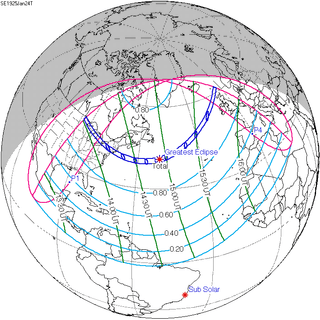 January 24, 1925 |
 February 4, 1943 |
| 58 | 59 | 60 |
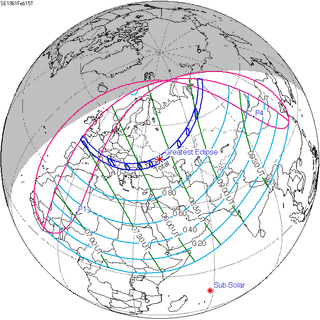 February 15, 1961 |
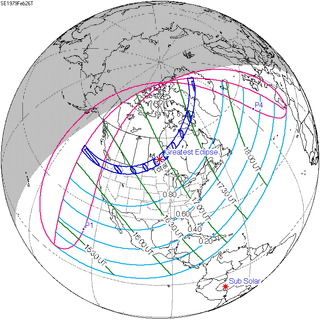 February 26, 1979 |
 March 9, 1997 |
| 61 | 62 | 63 |
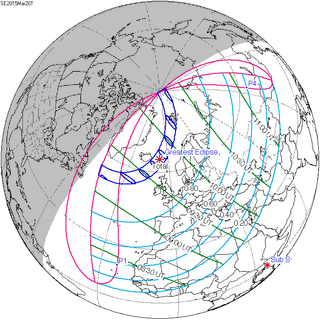 March 20, 2015 |
 March 30, 2033 |
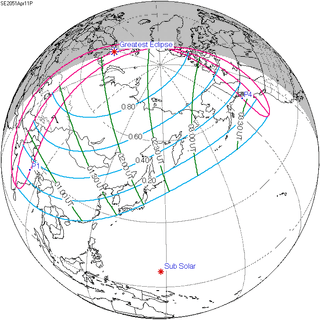 April 11, 2051 |
| 64 | 65 | |
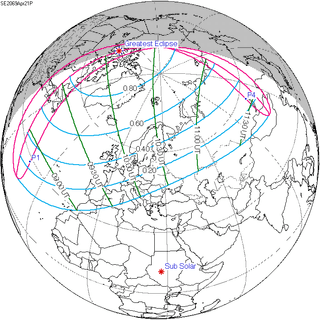 April 21, 2069 |
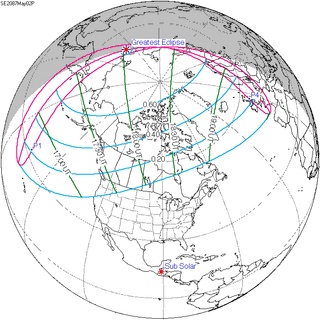 May 2, 2087 |
References
| Wikimedia Commons has media related to Solar eclipse of 2033 March 30. |

